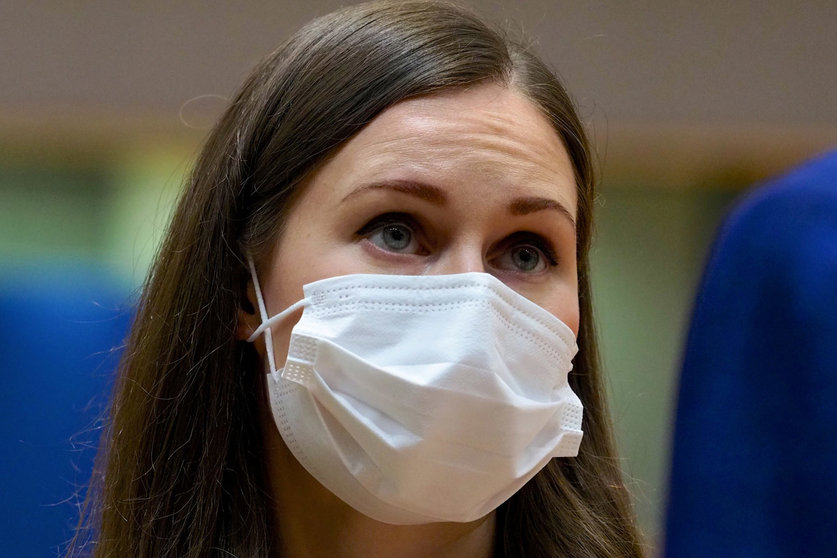After three-quarters of GDP contractions, the Finnish government foresees a disastrous end of the year for the national economy due to the damage caused by the coronavirus pandemic.
According to the latest Economic Survey by the Ministry of Finance, published on 5 October, the Finnish economy will shrink by 4.5% this year, which will give way to a scenario of slow recovery, low level of consumption, unemployment, uncertainty and public finances in high deficit.
"The considerable increase in Covid-19 infections and the imposition of new restrictions cast a further shadow over the recovery, and the economy is once again at a turning point," the Ministry said in a press release.
Not everything is bad in the assessment of the Ministry of Finance. The coronavirus (COVID-19) pandemic nevertheless caused less damage to the Finnish economy in the first half of the year than it did to most other European economies.
During the summer, there was a quieter period in the virus situation, which prompted households to be more active and to consume more, but the pace of economic recovery is slow due to the low level of confidence felt across the economy and the increase in uncertainty.
According to the forecast, after this year's contraction (4.5%), Finnish Gross Domestic Product (GDP) is expected to grow by 2.6% and by 1.7% in 2022. Recovery, yes, but not very vigorous.
Very slow recovery
If that forecast comes true, Finland will have a gradual but very slow recovery compared to the rest of the world. The same government document says that the global economy will have contracted by more than 6% during 2020, but globally a recovery will be evident from the third quarter this year. Forecasts show it will grow by 5.5% in 2021.
“The economy is at a turning point, as the epidemic has reared its head again. The recovery threatens to be delayed if households and businesses take a gloomier view of the way head. Only effective treatment or a vaccine will bring a clearer outlook. Once that happens, though, things could move forward at quite a pace for a while,” says Mikko Spolander, Director General of the Economics Department at the Ministry of Finance.
Public finances in deficit
Public finances have been weakened as a result of the economic recession that has followed the coronavirus crisis and the government's measures to support businesses and private citizens. Finland’s general government deficit will grow substantially this year to about 18 billion euros, or 7.7% of GDP, according to the official forecast.
The imbalance between general government revenue and expenditure will be reduced in the next few years, but in 2024 it will still be close to 7 billion euros, or 2.7% of GDP.
The general government debt-to-GDP ratio therefore looks set to grow throughout the 2020s. Strengthening general government finances by some 5 billion in the period to 2026 would stabilise the debt ratio to a level between 70% and 75% in the 2020s. Restoring the debt ratio during the 2020s to the level of 2019 (around 60%), would, in turn, require general government finances to be strengthened by around 10 billion euros.
Exports and labour
The uncertainty caused by the pandemic is slowing the growth in foreign demand in many sectors that are important for Finland's exports, and as a consequence exports will continue to decrease further this year.
The outlook for industry in the latter part of this year is therefore also subdued. In services, the outlook for ICT and business services is better than in sectors directly affected by restrictions in mobility and by reduced consumer confidence.
Growth in private investment will be weakest in the third quarter of this year and will continue to be weak at the end of the year and in the coming years. Private investment will decrease overall, reducing the ratio of private investment to GDP to around 19% in 2022.
Consumption of services has been hardest hit by the restrictions on mobility and business activities. Consumer caution is expected to adversely affect the consumption of services next year as well. Consumption of consumer goods decreased moderately in the first half of 2020. It is estimated that it will return to its normal level in the first half of 2021. The increase in consumer prices will remain moderate due to the low level of consumption growth.
The demand for labour has decreased, and the number of people employed will continue to decrease in 2020. In 2021 and 2022, growth in the economy will gradually push up the demand for labour.
The unemployment rate in 2021 will rise to 8.2% at most. In 2022, despite an increase in employment, the employment rate will not exceed 71.5%, still far from the 75% stated as a goal in the government programme.










